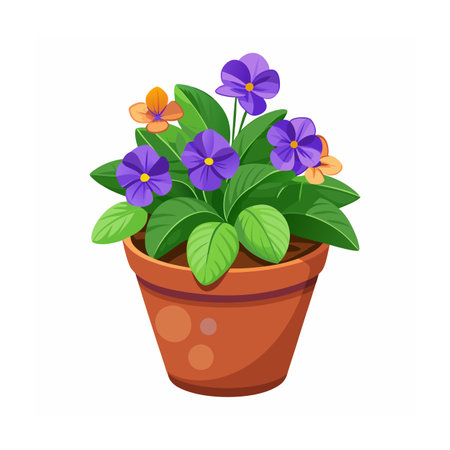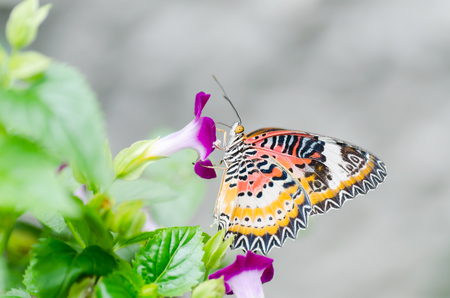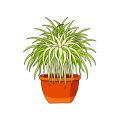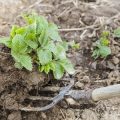1. Understanding the Importance of Native Insects
Native insects play a vital role in keeping our gardens and local ecosystems healthy. These insects have evolved alongside native plants over thousands of years, creating balanced relationships that benefit both wildlife and people. By understanding how these insects support your garden, you can make better choices to protect and encourage them.
Pollination Powerhouses
Many native insects are excellent pollinators, helping flowers produce fruits and seeds. While honeybees often get the spotlight, native bees like bumblebees, mason bees, and sweat bees are just as important — if not more so — for pollinating native plants. These insects are specially adapted to local flora, making them incredibly efficient at their job.
Common Native Pollinators in the U.S.
| Insect | Pollination Role | Best Plants to Attract Them |
|---|---|---|
| Bumblebee | Pollinates many fruits and vegetables | Bee balm, goldenrod, sunflowers |
| Mason Bee | Excellent early spring pollinator | Redbud, cherry trees, wildflowers |
| Sweat Bee | Pollinates smaller flowers | Asters, yarrow, coneflowers |
Natural Pest Control Allies
Not all bugs are bad! Predatory native insects help control pests that might otherwise damage your plants. Lady beetles (also known as ladybugs), lacewings, and parasitic wasps feed on aphids, caterpillars, and other garden pests without harming your plants or the environment.
Garden-Friendly Predators
| Beneficial Insect | Pest Targeted | How to Support Them |
|---|---|---|
| Lady Beetle | Aphids, mites, soft-bodied insects | Plant dill, fennel, or marigold nearby |
| Lacewing | Aphids, thrips, whiteflies | Provide flowering herbs like coriander or sweet alyssum |
| Parasitic Wasp | Caterpillars, beetle larvae | Avoid pesticides; plant nectar-rich flowers like yarrow or tansy |
Soil Health Helpers
Certain native insects also improve soil health by breaking down organic matter or aerating the soil. Ground beetles and some types of ants help decompose leaves and other materials, enriching the soil with nutrients that plants need to thrive.
The Balance of Co-Evolution
Native insects have co-evolved with native plants in a way that supports biodiversity and stability in the ecosystem. This means they’re uniquely suited to each other’s needs—plants provide food and shelter for insects, while insects help plants reproduce and stay healthy. When we introduce non-native species or use harsh chemicals in our gardens, we disrupt this delicate balance.
Tip:
If youre planning a garden makeover or adding new plants this season, consider incorporating native species. Not only will they thrive with less maintenance, but theyll also attract beneficial native insects that keep your garden vibrant and productive.
By recognizing the importance of native insects in pollination, pest control, and soil enrichment, gardeners can create more sustainable outdoor spaces that support both nature and their own growing goals.
2. Common Garden-Friendly Native Insects
Many native insects are not just harmless—they’re helpful allies in your garden. Recognizing these beneficial bugs and understanding what they do can help you create a healthier, more balanced outdoor space. Below are some of the most common garden-friendly native insects found across American gardens.
Lady Beetles (Ladybugs)
Lady beetles are one of the most well-known beneficial insects. Both adults and larvae feed on soft-bodied pests like aphids, mites, and whiteflies. They are natural pest controllers that can save you from using chemical sprays.
Key Benefits:
- Control aphid populations
- Reduce need for pesticides
- Non-aggressive and safe around people
Native Bees
Unlike honeybees, which were introduced from Europe, native bees such as bumblebees, mason bees, and leafcutter bees are essential pollinators. These bees are often solitary and less likely to sting than honeybees.
Key Benefits:
- Pollinate vegetables, fruits, and flowers
- Support biodiversity in your yard
- Work efficiently even in cooler weather
Lacewings
Lacewing larvae—sometimes called “aphid lions”—are voracious predators of many soft-bodied insect pests. The adults feed mostly on nectar and pollen, helping with pollination as well.
Key Benefits:
- Control aphids, thrips, mealybugs, and caterpillars
- Safe for plants and people
- Attract other beneficial insects by feeding on pollen
Parasitic Wasps
Though tiny and often unnoticed, parasitic wasps play a big role in pest control. These wasps lay their eggs inside or on pest insects like caterpillars or beetle larvae. When the eggs hatch, the young wasps consume the host from within.
Key Benefits:
- Naturally reduce pest populations
- No harm to humans or pets
- Diverse species target different pests
Quick Reference Table: Beneficial Native Insects
| Insect | Main Benefit | Pests Controlled / Role |
|---|---|---|
| Lady Beetles (Ladybugs) | Pest Control | Aphids, mites, whiteflies |
| Native Bees (e.g., Bumblebees) | Pollination | Vegetables, fruits, flowers |
| Lacewings | Pest Control & Pollination Support | Aphids, thrips, caterpillars |
| Parasitic Wasps | Pest Control via Parasitism | Caterpillars, beetle larvae, aphids (varies by species) |
Understanding who these insect allies are—and what they do—can make all the difference in growing a thriving garden without relying heavily on chemicals. By learning to identify them early on, you’ll be better equipped to protect and encourage their presence in your landscape.

3. How to Identify Native Insects in Your Garden
Getting to know the native insects in your garden is a fun and rewarding way to support local ecosystems. These insects often play crucial roles as pollinators, decomposers, or natural pest controllers. By learning how to identify them, you can better understand their behavior and make informed choices about your gardening practices.
Start by Observing
The first step to identifying native insects is simply to watch whats happening in your garden. Spend time outside during different times of day and in various weather conditions. Take note of where insects are gathering—on flowers, under leaves, or near compost piles. A simple notebook or smartphone can help you track what you see.
Key Features to Look For
When observing insects, pay attention to a few important characteristics that can help with identification:
| Feature | What to Look For |
|---|---|
| Body Shape | Is it long and skinny like a wasp, or round like a lady beetle? |
| Coloration | Note any bright colors, stripes, or spots that stand out. |
| Wings | Are they visible? Do they fold flat or stick out? |
| Antennae | Look at the length and shape; some are feathery while others are straight. |
| Behavior | Observe how the insect moves—does it hover, crawl, dig, or buzz from flower to flower? |
| Habitat Preferences | Certain insects prefer specific plants, soil types, or moisture levels. |
Use Field Guides and Apps
If youre not sure what youre looking at, field guides and mobile apps can be incredibly helpful. Here are a few resources commonly used by American gardeners:
- “National Wildlife Federation Field Guide to Insects and Spiders of North America” – A detailed print guide covering many native species.
- iNaturalist (App) – Snap a photo and get community-verified identifications.
- Seek by iNaturalist (App) – Great for beginners; uses image recognition to suggest IDs instantly.
- Bugs of North America (Field Guide) – A compact option for quick reference outdoors.
Document What You Find
Keep a simple log of your sightings. Include details like date, location in the garden, weather conditions, and what the insect was doing. Over time, this record will help you notice patterns—like which bugs appear only during certain months or which ones return year after year.
Example Log Entry:
| Date | Insect Description | Location in Garden | Activity Observed |
|---|---|---|---|
| April 10 | Tiny metallic green bee with black stripes on abdomen | Zinnias near front fence | Pollen collecting on flower heads |
The more you observe and document, the easier it becomes to recognize which insects are beneficial and truly belong in your gardens ecosystem. This awareness is key to creating a healthy space for both plants and wildlife.
4. Creating a Habitat for Beneficial Insects
If you want to attract and support native, garden-friendly insects, creating the right habitat is key. These beneficial bugs help pollinate your plants and control pests naturally. Heres how to make your garden a welcoming place for them.
Plant Native Flora
Native plants are the foundation of a healthy insect habitat. They provide food and shelter for local species throughout their life cycles. Choose a variety of flowering plants that bloom at different times of the year to ensure a consistent food source.
Examples of U.S. Native Plants by Region
| Region | Native Plants |
|---|---|
| Northeast | Bee balm, Purple coneflower, New England aster |
| Southeast | Black-eyed Susan, Coral honeysuckle, Butterfly weed |
| Midwest | Prairie blazing star, Wild bergamot, Goldenrod |
| Southwest | Desert marigold, Penstemon, Milkweed |
| West Coast | California poppy, Yarrow, Ceanothus |
Provide Water Sources
Insects need water just like any other living creature. A shallow dish with pebbles or a birdbath with stones sticking out of the water gives them a safe place to land and drink. Be sure to clean and refill it regularly to avoid mosquito breeding.
Create Shelter and Nesting Spots
Diverse habitats encourage more insect species to settle in your garden. Leave some areas undisturbed with leaf litter or mulch, install insect hotels made from natural materials like bamboo and wood, or leave dead plant stems standing through winter for overwintering insects.
Minimize Pesticide Use
Pesticides can harm both pests and helpful insects. Instead of reaching for chemical sprays, try these alternatives:
Pest Management Alternatives
| Problem | Eco-Friendly Solution |
|---|---|
| Aphids on vegetables | Introduce ladybugs or spray with diluted soap water |
| Caterpillars eating leaves | Handpick or attract birds to feed on them |
| Mildew or fungus issues | Use neem oil or increase air circulation between plants |
| Slugs and snails in moist areas | Add copper tape barriers or use beer traps at night |
Keep it Consistent Year-Round
A truly insect-friendly garden supports life throughout all seasons. Avoid cutting everything back in fall—some insects overwinter in hollow stems or under debris. Keep planting successions that ensure blooms from early spring through late fall.
Your Backyard Can Make a Difference!
You don’t need acres of land to help native insects thrive. Even small garden beds, balcony planters, or container gardens can offer vital resources when thoughtfully planned. The more gardeners who join in, the stronger our local ecosystems become.
5. Avoiding Common Mistakes and Misconceptions
When it comes to gardening with native insects in mind, its easy to make a few missteps—especially when youre trying to protect your plants. One of the most common mistakes is confusing helpful insects with harmful pests. Knowing the difference can save your garden and support a healthier ecosystem.
Mistaking Friends for Foes
Not all bugs are bad! In fact, many native insects play essential roles in pollination, pest control, and soil health. For example, ladybugs eat aphids, which are common plant pests. Similarly, ground beetles feed on slugs and other unwanted critters. However, because these beneficial insects may not look “pretty” or familiar, they’re often killed off by accident.
Commonly Confused Insects
| Beneficial Insect | Often Mistaken For | Why It Matters |
|---|---|---|
| Lacewing larvae | Pest due to their fierce appearance | They eat aphids, mites, and other soft-bodied insects |
| Hoverflies (Syrphid flies) | Bees or wasps | They pollinate plants and their larvae eat aphids |
| Parasitic wasps | Pests or stinging threats | They help manage caterpillars and other insect populations naturally |
Avoiding Harmful Practices
Many gardeners unintentionally harm beneficial insects through overuse of chemical pesticides or cleaning up too much of their gardens in fall and winter. Here’s how to avoid those mistakes:
Eco-Friendly Gardening Tips
- Limit pesticide use: If you must use something, choose organic or targeted treatments that won’t harm pollinators or predatory insects.
- Leave some leaf litter: Many beneficial insects overwinter in leaf piles or hollow stems—resist the urge to tidy up everything.
- Diversify your plantings: A variety of native plants supports different types of helpful insects throughout the seasons.
- Create insect habitats: Add logs, rocks, or bug hotels to encourage nesting and shelter.
Learn Before You Act
The best way to support native insects is to observe first and act second. If you see an unfamiliar bug in your garden, take a photo and look it up before assuming it’s a pest. Many local extension services or native gardening groups can help you identify them correctly.
Helpful Resources for Identification:
- iNaturalist
- BugGuide.net
- Your local university extension office website
By avoiding these common mistakes and taking a more eco-friendly approach, you’ll create a garden that not only looks beautiful but also functions as a thriving part of the local ecosystem.


